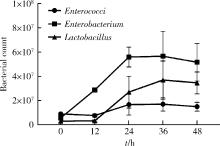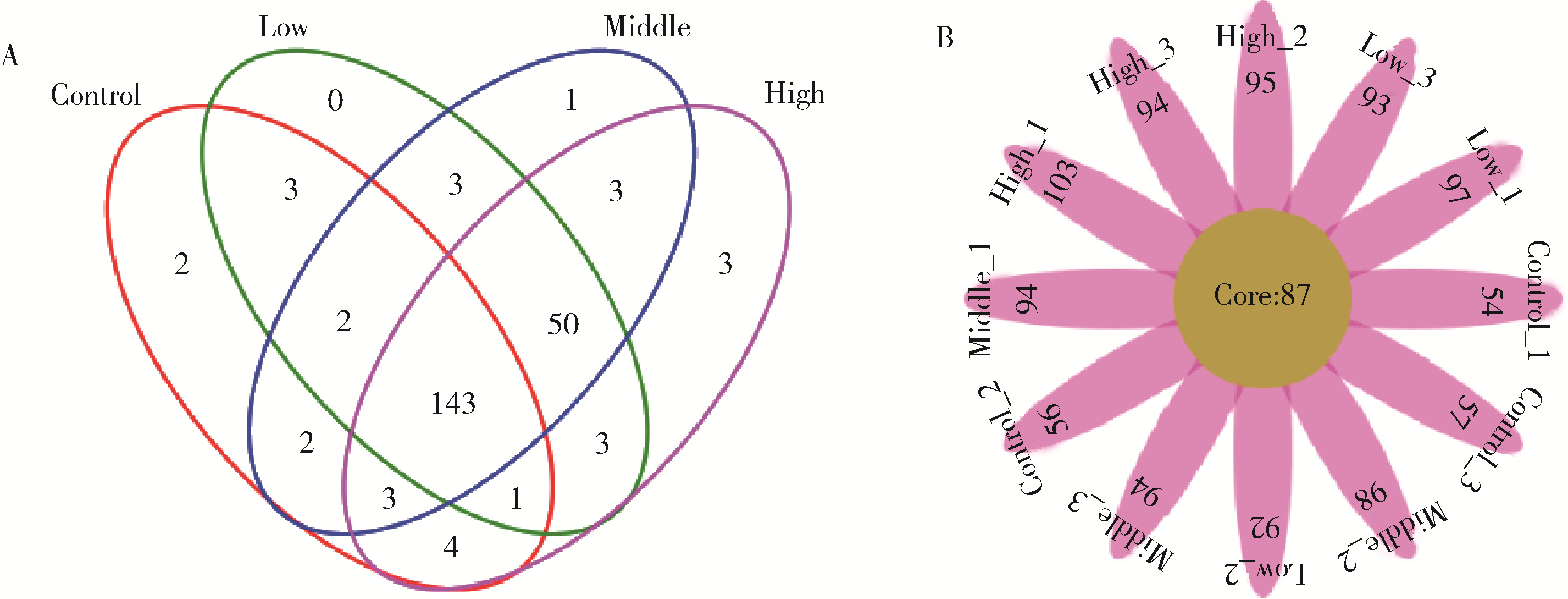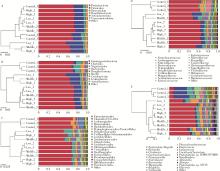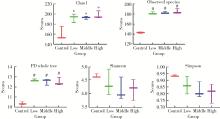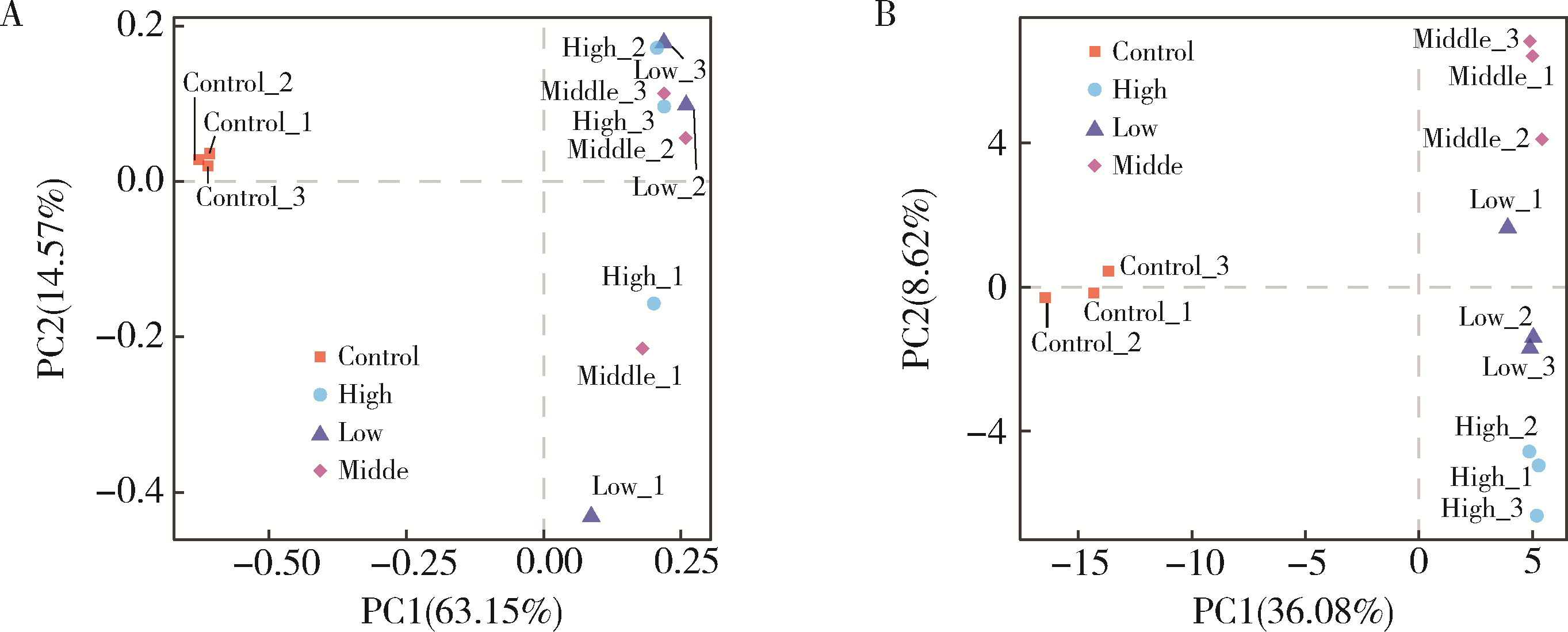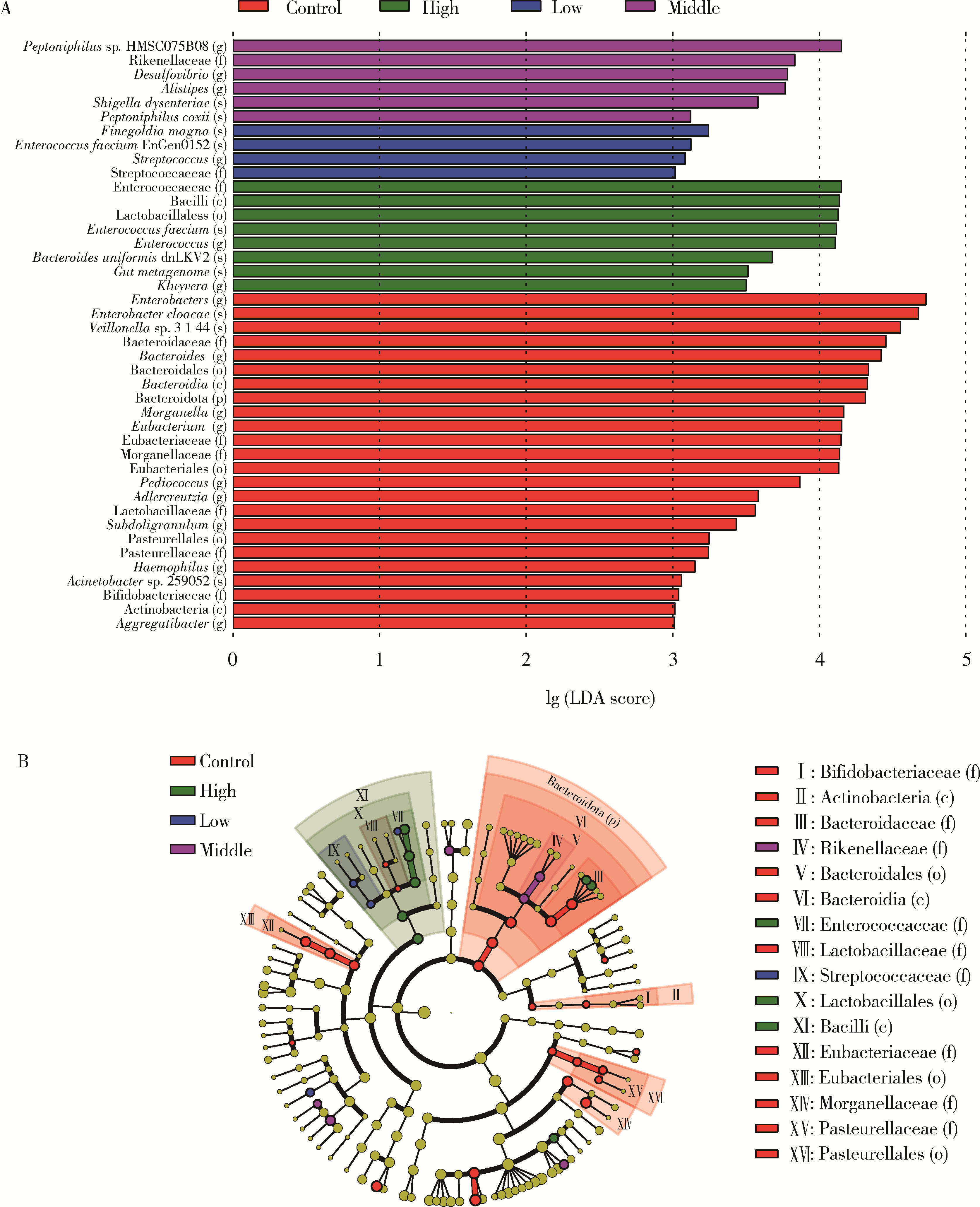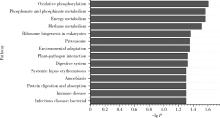Journal of Peking University (Health Sciences) ›› 2022, Vol. 54 ›› Issue (3): 468-476. doi: 10.19723/j.issn.1671-167X.2022.03.011
Previous Articles Next Articles
Effects of nano titanium dioxide on gut microbiota based on human digestive tract microecology simulation system in vitro
Jia-he ZHANG,Jia-qi SHI,Zhang-jian CHEN,Guang JIA*( )
)
- Department of Occupational and Environmental Health Sciences, Peking University School of Public Health; Beijing Key Laboratory of Toxicological Research and Risk Assessment for Food Safety, Beijing 100191, China
CLC Number:
- R155.5
| 1 | Aguilar F, Crebelli R, Di Domenico A, et al. Re-evaluation of titanium dioxide (E 171) as a food additive[J/OL]. EFSA Journal, 2016, 14(9): 4545. https://doi.org/10.2903/j.efsa.2016.4545. |
| 2 |
Yang Y , Doudrick K , Bi X , et al. Characterization of food-grade titanium dioxide: The presence of nanosized particles[J]. Environ Sci Technol, 2014, 48 (11): 6391- 6400.
doi: 10.1021/es500436x |
| 3 |
Chen ZJ , Han S , Zhou SP , et al. Review of health safety aspects of titanium dioxide nanoparticles in food application[J]. Nanoimpact, 2020, 18, 100224.
doi: 10.1016/j.impact.2020.100224 |
| 4 |
Shakeel M , Jabeen F , Shabbir S , et al. Toxicity of nano-titanium dioxide (TiO2-NP) through various routes of exposure: A review[J]. Biol Trace Elem Res, 2016, 172 (1): 1- 36.
doi: 10.1007/s12011-015-0550-x |
| 5 | Alavi M , Karimi N . Characterization, antibacterial, total antioxidant, scavenging, reducing power and ion chelating activities of green synthesized silver, copper and titanium dioxide nanoparticles using Artemisia haussknechtii leaf extract[J]. Artif Cells Nanomed Biotechnol, 2018, 46 (8): 2066- 2081. |
| 6 |
Hajipour MJ , Fromm KM , Ashkarran AA , et al. Antibacterial properties of nanoparticles[J]. Trends Biotechnol, 2012, 30 (10): 499- 511.
doi: 10.1016/j.tibtech.2012.06.004 |
| 7 | Daou I , Moukrad N , Zegaoui O , et al. Antimicrobial activity of ZnO-TiO2 nanomaterials synthesized from three different precursors of ZnO: Influence of ZnO/TiO2 weight ratio[J]. Water Sci Technol, 2018, 77 (5/6): 1238- 1249. |
| 8 |
Chen L , Guo Y , Hu C , et al. Dysbiosis of gut microbiota by chronic coexposure to titanium dioxide nanoparticles and bisphenol A: Implications for host health in zebrafish[J]. Environ Pollut, 2018, 234, 307- 317.
doi: 10.1016/j.envpol.2017.11.074 |
| 9 |
Chen Z , Han S , Zhou D , et al. Effects of oral exposure to tita-nium dioxide nanoparticles on gut microbiota and gut-associated metabolism in vivo[J]. Nanoscale, 2019, 11 (46): 22398- 22412.
doi: 10.1039/C9NR07580A |
| 10 |
Chen Z , Zhou D , Han S , et al. Hepatotoxicity and the role of the gut-liver axis in rats after oral administration of titanium dioxide nanoparticles[J]. Part Fibre Toxicol, 2019, 16 (1): 48.
doi: 10.1186/s12989-019-0332-2 |
| 11 |
Mu W , Wang Y , Huang C , et al. Effect of long-term intake of dietary titanium dioxide nanoparticles on intestine inflammation in mice[J]. J Agric Food Chem, 2019, 67 (33): 9382- 9389.
doi: 10.1021/acs.jafc.9b02391 |
| 12 |
Li J , Yang S , Lei R , et al. Oral administration of rutile and anatase TiO2 nanoparticles shifts mouse gut microbiota structure[J]. Nanoscale, 2018, 10 (16): 7736- 7745.
doi: 10.1039/C8NR00386F |
| 13 | 刘倩, 姜建辉, 吴瑛. 纳米二氧化钛对果蝇肠道共生菌的影响[J]. 黑龙江农业科学, 2017, (9): 94- 97. |
| 14 |
Brodkorb A , Egger L , Alminger M , et al. INFOGEST static in vitro simulation of gastrointestinal food digestion[J]. Nat Protoc, 2019, 14 (4): 991- 1014.
doi: 10.1038/s41596-018-0119-1 |
| 15 |
Molly K , Woestyne MV , Verstraete W . Development of a 5-step multichamber reactor as a simulation of the human intestinal microbial ecosystem[J]. Appl Microbiol Biot, 1993, 39 (2): 254- 258.
doi: 10.1007/BF00228615 |
| 16 |
杨立娜, 黄靖航, 赵亚凡, 等. 胃肠道体外模拟系统在调控肠道菌群研究中的应用进展[J]. 渤海大学学报(自然科学版), 2018, 39 (4): 320- 329.
doi: 10.3969/j.issn.1673-0569.2018.04.007 |
| 17 |
Laird BD , van de Wiele TR , Corriveau MC , et al. Gastrointestinal microbes increase arsenic bioaccessibility of ingested mine tai-lings using the simulator of the human intestinal microbial ecosystem[J]. Environ Sci Technol, 2007, 41 (15): 5542- 5547.
doi: 10.1021/es062410e |
| 18 | 叶峰, 王晓艳. 粪菌保存液及其保存粪菌的方法, CN105385599A[P/OL]. (2016-03-09)[2022-02-16]. https://pss-system.cponline.cnipa.gov.cn/documents/detail?prevPageTit=chagngui. |
| 19 |
Schiller C , Frohlich CP , Giessmann T , et al. Intestinal fluid vo-lumes and transit of dosage forms as assessed by magnetic resonance imaging[J]. Aliment Pharm Ther, 2005, 22 (10): 971- 979.
doi: 10.1111/j.1365-2036.2005.02683.x |
| 20 |
Khan ST , Saleem S , Ahamed M , et al. Survival of probiotic bacteria in the presence of food grade nanoparticles from chocolates: An in vitro and in vivo study[J]. Appl Microbiol Biot, 2019, 103 (16): 6689- 6700.
doi: 10.1007/s00253-019-09918-5 |
| 21 | Baranowska-Wójcik E, Szwajgier D, Gustaw K. Effect of TiO2 on selected pathogenic and opportunistic intestinal bacteria[J/OL]. Biol Trace Elem Res, (2021-07-23)[2021-12-08]. doi: 10.1007/s12011-021-02843-7. |
| 22 |
Lucas-González R , Viuda-Martos M , Pérez-Alvarez JA , et al. In vitro digestion models suitable for foods: Opportunities for new fields of application and challenges[J]. Food Research International, 2018, 107, 423- 436.
doi: 10.1016/j.foodres.2018.02.055 |
| 23 | Dudefoi W , Moniz K , Allen-Vercoe E , et al. Impact of food grade and nano-TiO2 particles on a human intestinal community[J]. Food Chem Toxicol, 2017, 106 (Pt A): 242- 249. |
| 24 |
Gomaa EZ . Human gut microbiota/microbiome in health and di-seases: A review[J]. Antonie van Leeuwenhoek, 2020, 113 (12): 2019- 2040.
doi: 10.1007/s10482-020-01474-7 |
| 25 |
Nogueira CM , de Azevedo WM , Dagli ML , et al. Titanium dio-xide induced inflammation in the small intestine[J]. World J Gastroenterol, 2012, 18 (34): 4729- 4735.
doi: 10.3748/wjg.v18.i34.4729 |
| 26 | 刘静. 纳米TiO2对肠上皮紧密连接蛋白Occludin和ZO-1的表达及相关细胞信号通道的影响[D]. 南京: 东南大学, 2019. |
| 27 | 陈章健, 王云, 贾光. 纳米二氧化钛食品安全性研究进展[J]. 卫生研究, 2015, 44 (6): 1036- 1041. |
| [1] | Jia-qi SHI,Ying MA,Yi ZHANG,Zhang-jian CHEN,Guang JIA. Effects of titanium dioxide nanoparticles on circRNA expression profiles in human hepatocellular carcinoma cells HepG2 [J]. Journal of Peking University (Health Sciences), 2023, 55(3): 392-399. |
| [2] | Wen-han BAO,Wen TANG. Changes of gut microflora in newly diagnosed IgA nephropathy patients and its correlation with clinical risk factors [J]. Journal of Peking University (Health Sciences), 2023, 55(1): 124-132. |
| [3] | WANG Zi-jing,LI Zai-ling. Characteristics of gastric microbiota in children with Helicobacter pylori infection family history [J]. Journal of Peking University (Health Sciences), 2021, 53(6): 1115-1121. |
| [4] | Di ZHOU,Zhang-jian CHEN,Gui-ping HU,Teng-long YAN,Chang-mao LONG,Hui-min FENG,Guang JIA. Influence of oxidative/antioxidative biomarkers and inflammatory cytokines on rats after sub-acute orally administration of titanium dioxide nanoparticles [J]. Journal of Peking University (Health Sciences), 2020, 52(5): 821-827. |
| [5] | Shuo HAN,Zhang-jian CHEN,Di ZHOU,Pai ZHENG,Jia-he ZHANG,Guang JIA. Effects of titanium dioxide nanoparticles on fecal metabolome in rats after oral administration for 90 days [J]. Journal of Peking University (Health Sciences), 2020, 52(3): 457-463. |
| [6] | Zhang-jian CHEN,Shuo HAN,Pai ZHENG,Shu-pei ZHOU,Guang JIA. Effect of subchronic combined oral exposure of titanium dioxide nanoparticles and glucose on levels of serum folate and vitamin B12 in young SD rats [J]. Journal of Peking University (Health Sciences), 2020, 52(3): 451-456. |
| [7] | DUAN Shu-min, ZHANG Yong-liang, WANG Yun. Effects of titanium dioxide nanoparticles and lipopolysaccharide on antioxidant function of liver tissues in mice [J]. Journal of Peking University(Health Sciences), 2018, 50(3): 395-400. |
| [8] | WANG Huan, QIN Xiao-ya, LI Zi-yuan, ZHENG Zhuo-zhao, FAN Tian-yuan. Preparation and characterization of citric acid-modified superparamagnetic iron oxide nanoparticles [J]. Journal of Peking University(Health Sciences), 2018, 50(2): 340-346. |
| [9] | ZHANG Yong-liang, CHEN Zhang-jian, CHEN Shi, ZHUO lin, JIA Guang, WANG Yun. Effect of nano-TiO2 on intestinal glucose absorption in young rat on the everted gut sac model [J]. Journal of Peking University(Health Sciences), 2017, 49(3): 376-382. |
| [10] | YANG Di, XU Jun-hui, DENG Fu-rong△, GUO Xin-biao . Effects of silver nanoparticle on hemichannel activation and anti-proliferation in HaCaT cells [J]. Journal of Peking University(Health Sciences), 2017, 49(3): 371-375. |
| [11] | GENG Liang, FAN Jing, GAO Qi-long, YU Jing, HUA Bao-jin. Preliminary study for the roles and mechanisms of 20(R)-ginsenoside Rg3 and PEG-PLGA-Rg3 nanoparticles in the Lewis lung cancer mice [J]. Journal of Peking University(Health Sciences), 2016, 48(3): 496-501. |
| [12] | WANG Yun, CHEN Zhang-Jian, BA Te, PU Ji, CUI Xiao-Xing, JIA Guang. Effects of TiO2 nanoparticles on antioxidant function and element content of liver and kidney tissues in young and adult rats [J]. Journal of Peking University(Health Sciences), 2014, 46(3): 395-399. |
|
||


